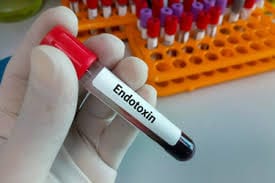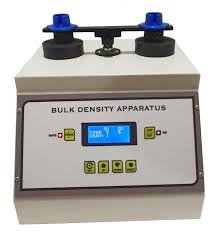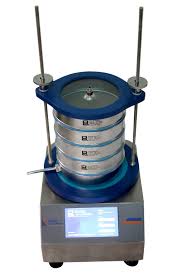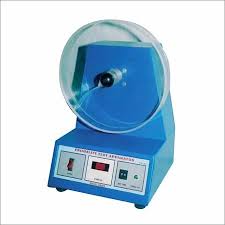|
Getting your Trinity Audio player ready... |
Q4B Annex 2(R1) Test for Extractable Volume of Parenteral Preparations
1. Introduction: Parenteral Preparations
Parenteral Preparations: The Q4B Annex 2(R1) document represents the culmination of the Q4B process for the “Test for Extractable Volume of Parenteral Preparations.” The Q4B initiative is a part of the ongoing work led by the International Council for Harmonisation (ICH) to align the pharmacopeial standards across various regions to ensure consistent quality control and regulatory compliance in the global pharmaceutical industry.
This annex was developed through collaboration with the Pharmacopoeial Discussion Group (PDG), a partnership involving experts from Europe, Japan, the United States, and other regions. Their goal was to harmonize the approach to testing the extractable volume of parenteral preparations (i.e., injectable medications) across these major pharmacopeias, which are critical in ensuring the safety, efficacy, and quality of medicinal products.
This annex specifically addresses the “Test for Extractable Volume of Parenteral Preparations” in the context of global harmonization. It outlines the equivalency and interchangeability of official texts from major pharmacopoeias, including the European Pharmacopoeia (Ph. Eur.), Japanese Pharmacopoeia (JP), and the United States Pharmacopeia (USP). As injectable preparations play a vital role in patient care, ensuring that the volume extracted from containers meets specific criteria is essential for maintaining both the efficacy and safety of these pharmaceutical products.
2. Q4B Outcome
2.1 Analytical Procedures
The Q4B Expert Working Group (EWG), which evaluated the texts in this annex, concluded that the analytical procedures outlined in the pharmacopoeial monographs are interchangeable across different ICH regions. The three key pharmacopoeias involved in this evaluation—the European Pharmacopoeia (Ph. Eur.), the Japanese Pharmacopoeia (JP), and the United States Pharmacopeia (USP)—each have their own official texts governing the “Test for Extractable Volume of Parenteral Preparations.” However, the Q4B EWG determined that these texts are essentially equivalent, meaning they can be used interchangeably across the regions.
The ICH Steering Committee, based on this evaluation, recommends the following pharmacopoeial texts as interchangeable for the test:
- Ph. Eur.: 2.9.17 Test for Extractable Volume of Parenteral Preparations.
- JP: 6.05 Test for Extractable Volume of Parenteral Preparations.
- USP: Section titled “Volume in Containers” in the Injections General Chapter.
These texts should be considered equivalent when used in regulatory applications, as they set forth the same testing methodology and acceptance criteria for determining the extractable volume of parenteral preparations.
2.2 Acceptance Criteria
In all three pharmacopoeias—the European Pharmacopoeia (Ph. Eur.), Japanese Pharmacopoeia (JP), and the United States Pharmacopeia (USP)—the acceptance criteria for the test for extractable volume are identical. This uniformity in criteria ensures consistency in the regulatory framework and facilitates the harmonization process across different regions.
3. Timing of Annex Implementation
The timing of the implementation of this annex will vary by region, as the process of incorporating the Q4B recommendations into national regulatory frameworks is subject to local regulatory procedures. Once the annex has been officially implemented and incorporated into the regulatory processes in a given region (i.e., at ICH Step 5), the harmonized standards outlined in this annex can be applied.
Each regulatory authority will notify stakeholders about the official adoption and implementation date for the region. While the annex’s adoption process may follow different timelines across regions, its eventual adoption is aimed at ensuring global consistency in testing methods for parenteral preparations.
4. Considerations for Implementation
The implementation of the Q4B-evaluated texts into regulatory frameworks requires careful attention to several considerations. Manufacturers, sponsors, and regulatory bodies need to adhere to these considerations when transitioning to the harmonized pharmacopoeial texts.
4.1 General Considerations
For manufacturers and sponsors who need to transition to the new Q4B-evaluated texts, it is important to recognize that such changes may trigger regulatory procedures. Specifically, if a company adopts the harmonized pharmacopoeial text referenced in Section 2.1 of this annex, any alterations to existing methods must be communicated to the relevant regulatory authorities. These changes could be subject to variation notifications, approval processes, or other similar procedures, in line with regional regulations governing changes to compendial methods.
4.2 FDA Considerations
In the United States, the Food and Drug Administration (FDA) has issued guidance that allows for the interchangeability of the pharmacopoeial texts referenced in Section 2.1 of this annex. However, the FDA may require companies to demonstrate that the chosen method is suitable for a specific product or material, regardless of which pharmacopoeia’s text is being used. This ensures that the method is appropriate for the unique characteristics of the product being tested, even if the underlying method has been harmonized across different regions.
4.3 EU Considerations
For the European Union (EU), the monographs of the European Pharmacopoeia (Ph. Eur.) are considered mandatory. However, regulatory authorities in the EU will accept the use of the corresponding texts from other pharmacopoeias (such as JP or USP) if they are referenced according to the conditions outlined in this annex. This means that manufacturers may submit a marketing authorization application, renewal, or variation application that cites the use of an alternate pharmacopoeial text (from JP or USP) to demonstrate compliance with the requirements of the Ph. Eur. Chapter 2.9.17 on the “Test for Extractable Volume of Parenteral Preparations.” The declaration of interchangeability in the annex allows for such flexibility in the regulatory process.
4.4 MHLW Considerations
In Japan, the Ministry of Health, Labour, and Welfare (MHLW) has indicated that the pharmacopoeial texts referenced in Section 2.1 of this annex may be used interchangeably, following the guidelines outlined in the annex. When the annex is officially implemented in Japan, the MHLW will provide further details on the specific requirements for adoption and compliance. These guidelines will ensure that manufacturers and sponsors are able to integrate the harmonized testing methods into their processes in a manner that complies with Japanese regulatory requirements.
4.5 Canada Considerations
In Canada, the implementation of the Q4B-evaluated pharmacopoeial texts as referenced in this annex will also allow for interchangeability. The Canadian regulatory authorities will accept any of the texts cited in Section 2.1, provided that they are used in accordance with the conditions laid out in this annex. This offers Canadian manufacturers the flexibility to use the harmonized texts from Ph. Eur., JP, or USP, in line with regional regulatory mechanisms.
5. References Used for the Q4B Evaluation
The evaluation process that led to the Q4B recommendations involved the review and sign-off of several key documents. The following references were used in the Q4B evaluation process:
5.1 The PDG Stage 5B Sign-Off Document
The final evaluation document, titled “Japanese Pharmacopoeial Forum, Volume 13, Number 3 (August 2004),” provides a detailed sign-off on the Q4B process. This document outlines the rationale behind the harmonization of the “Test for Extractable Volume of Parenteral Preparations” across the major pharmacopeias.
5.2 Pharmacopoeial References for Test for Extractable Volume of Parenteral Preparations
The following pharmacopoeial references were essential for the evaluation:
- European Pharmacopoeia (Ph. Eur.): Supplement 5.3, effective January 2006, includes the monograph for the “Test for Extractable Volume of Parenteral Preparations” (reference 01/2006:20917).
- Japanese Pharmacopoeia (JP): The 6.05 Test for Extractable Volume of Parenteral Preparations from the 15th Edition of the JP, as published on March 31, 2006.
- United States Pharmacopeia (USP): The official text from the USP Revision Bulletin issued November 14, 2006, and incorporated in USP 30, 2nd Supplement, effective December 1, 2007, in the section titled “Volume in Containers” under the Injections General Chapter.
These references form the basis for the Q4B harmonization and are considered equivalent across regions for the purposes of testing the extractable volume of parenteral preparations.















